The MSI MEG Ai1300P PCIE5 1300W PSU Review: The ATX 3.0 Era Has Begun
by E. Fylladitakis on December 8, 2022 11:00 AM EST- Posted in
- Cases/Cooling/PSUs
- PSUs
- MSI
- PCIe 5.0
- ATX v3.0
Cold Test Results (~22°C Ambient)
For the testing of PSUs, we are using high precision electronic loads with a maximum power draw of 2700 Watts, a Rigol DS5042M 40 MHz oscilloscope, an Extech 380803 power analyzer, two high precision UNI-T UT-325 digital thermometers, an Extech HD600 SPL meter, a self-designed hotbox and various other bits and parts. For a thorough explanation of our testing methodology and more details on our equipment, please refer to our How We Test PSUs - 2014 Pipeline post.
The efficiency of the MSI MEG Ai1300P does meet the 80Plus Platinum certification requirements when it is powered from an 115 VAC source. However, when the main’s voltage is 230 VAC, the efficiency is raised by an average of 1%, which is not enough to meet the 80Plus Platinum requirements for that input voltage. The average nominal load efficiency (20% to 100% of the unit's capacity) is 92.1% with the unit powered from a 230 VAC source, and drops down to 91.3% if the unit is powered by a 115 VAC source. It is also interesting to note that its efficiency under very low loads is quite high, at above 83% for a 5% load.
The fan of the MSI MEG Ai1300P PCIE5 is thermally controlled by default, with the unit keeping it disabled until the load was over 430-440 Watts. Regardless, the internal temperature of the PSU is quite low considering the massive power output. Once the fan does start, it is very quiet at first but then speeds up very quickly as the load increases, making the Ai1300P clearly audible when the load is greater than 800 Watts.


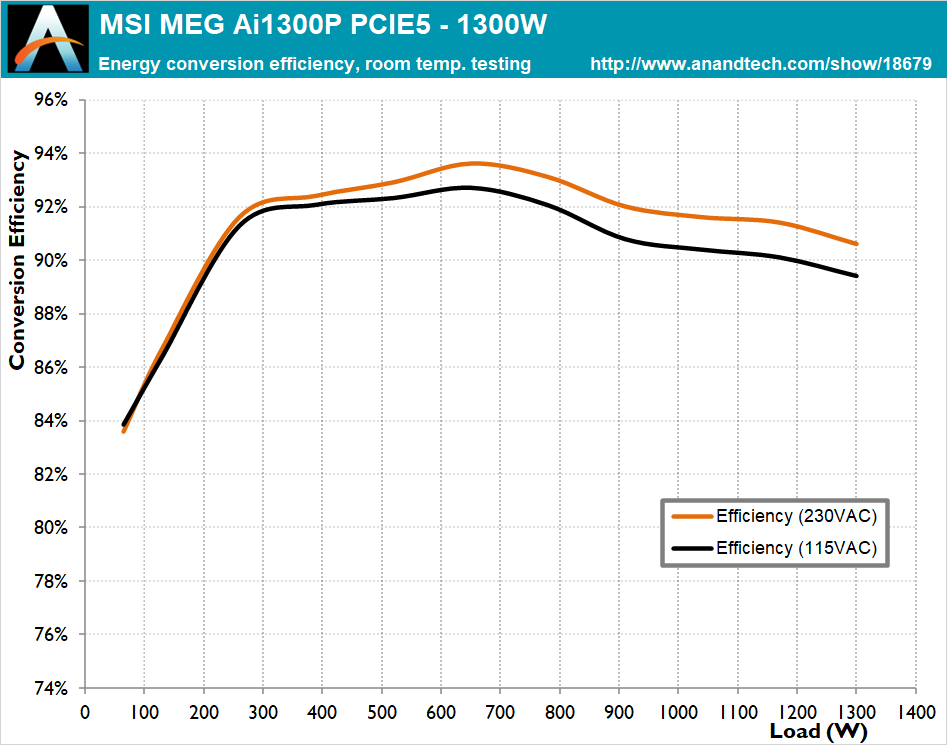
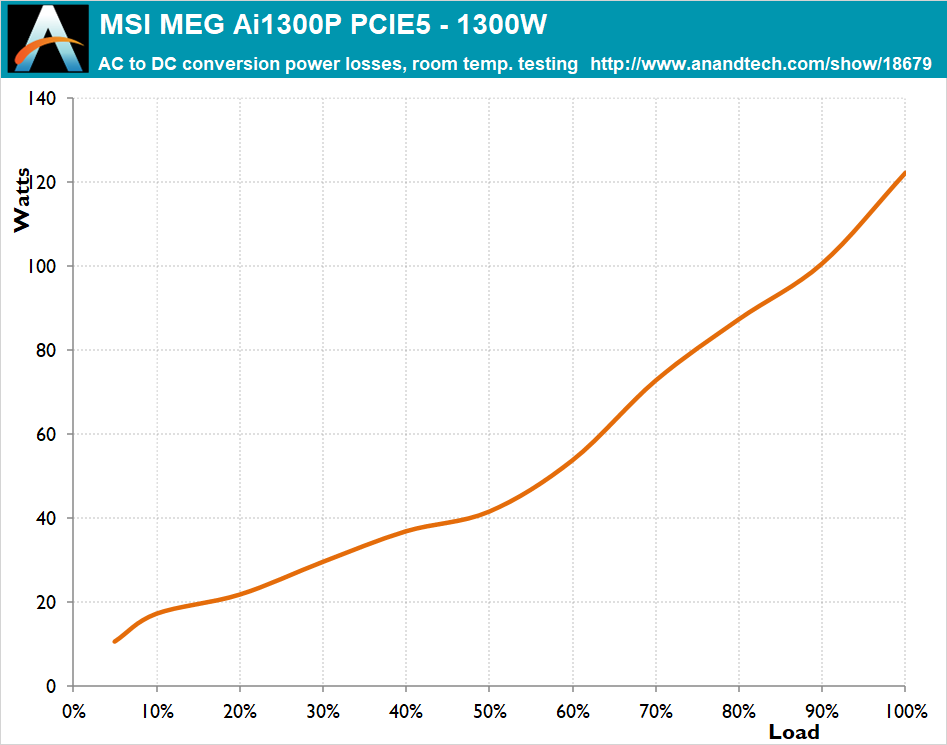
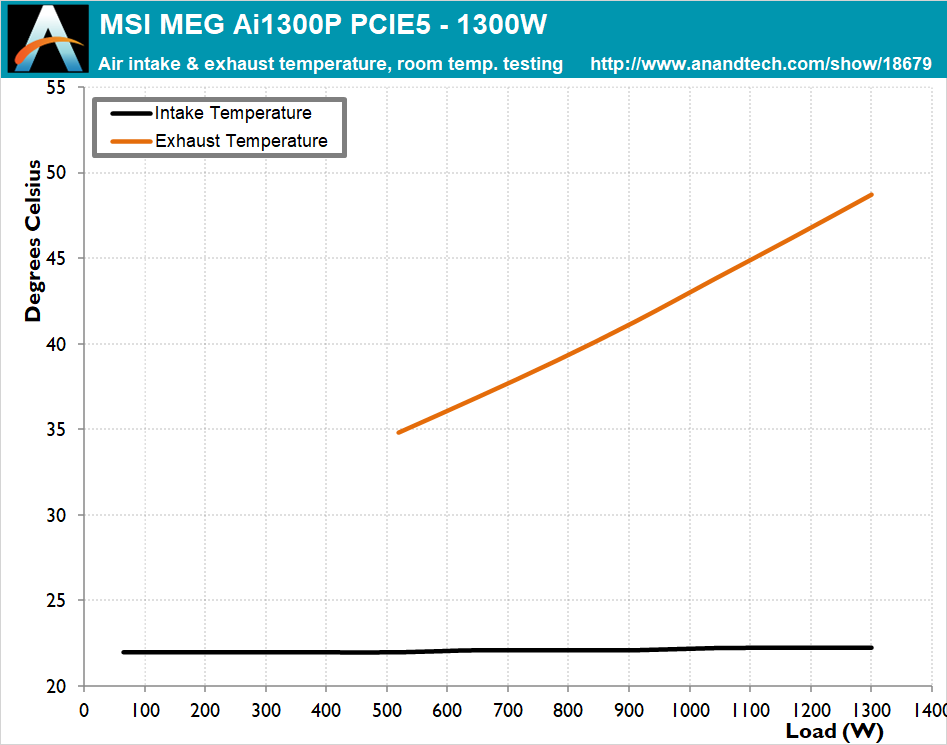
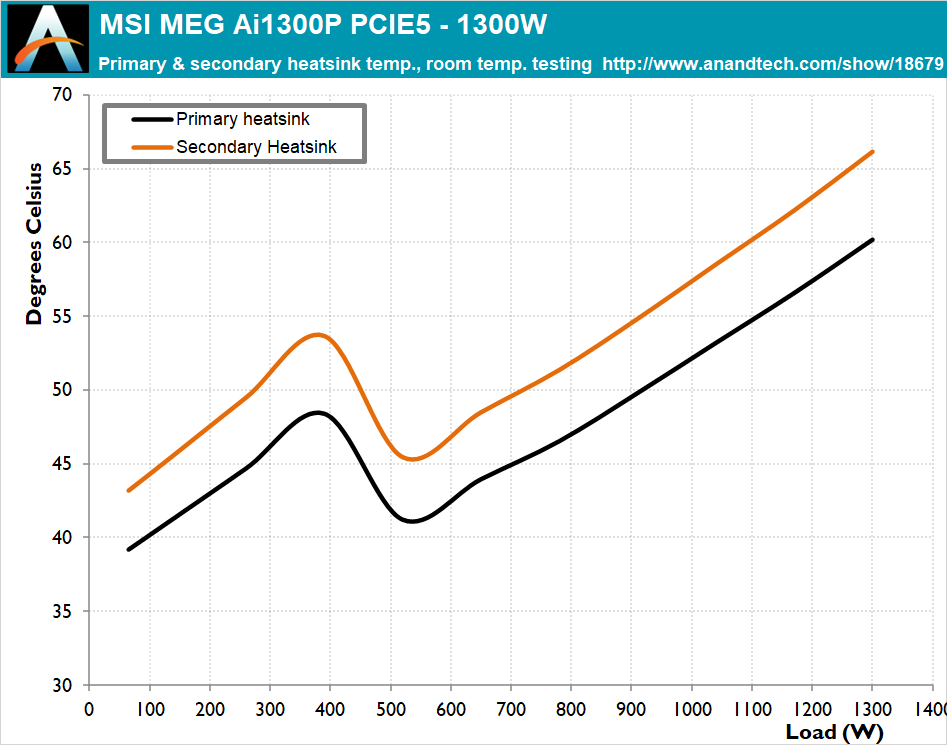
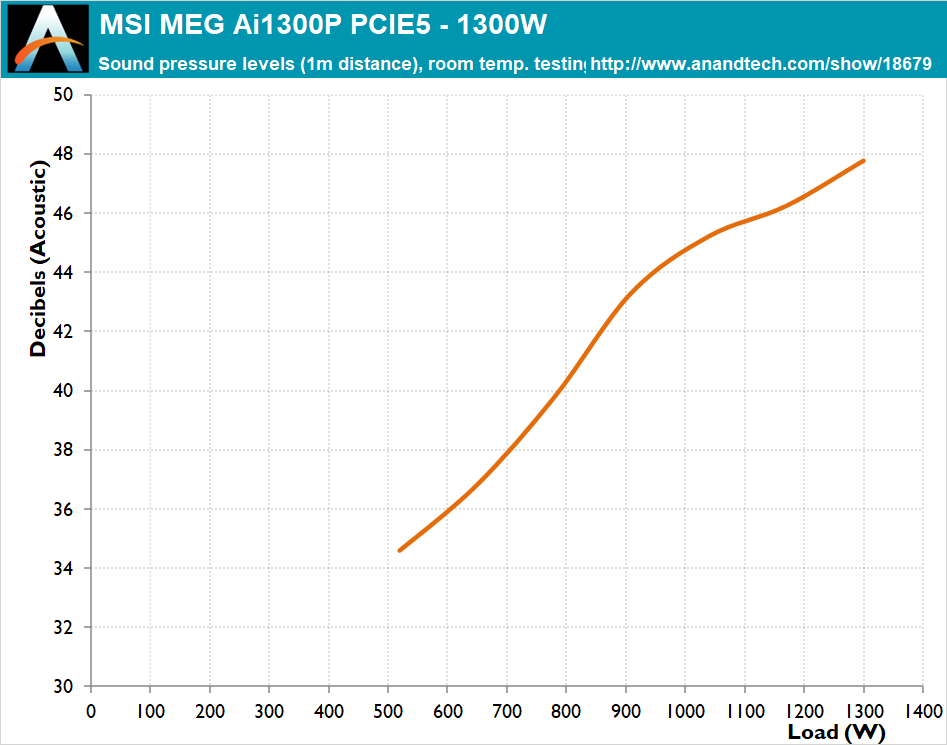








67 Comments
View All Comments
thestryker - Monday, December 12, 2022 - link
The GALAX RTX 4090 HOF would like to have a word with you about that. While I think it's stupid and would never run such a thing myself it does already exist.I'm assuming MSI erred on the side of maximum compatibility without adapter cables which is why it only has one 12VHPWR connector. I can understand why they did it, but it is not outside the realm of possibility that power consumption is going to keep going up at the top end where this PSU also certainly sits.
Glock24 - Monday, December 19, 2022 - link
And the next Intel CPU will also probably require another 12VHPWR 😂Arutius - Thursday, December 8, 2022 - link
Back in the day we had these things called "right angle" connectors. They work quite well and avoid the large loop needed for proper strain relief.shabby - Saturday, December 10, 2022 - link
Pepperidge farms remembers...WaltC - Thursday, December 8, 2022 - link
I don't see ATX 3.0 PSUs becoming the norm for a long, long time, fortunately...;)TheinsanegamerN - Thursday, December 8, 2022 - link
These are great, now when your GPU melts a plug you have to replace your PSU as well! Fantastic stuff, really.Byte - Thursday, December 8, 2022 - link
Seems like all the mobo makers wanna get in on the PS game. I just had a chance to work with an Asus Thor and it is bloody amazing with its OLED screen and pretty decent price. I used to be an EVGA Superflower lifer, but I think i will be switching to Asus with that screen and really nice cables. Now i gotta upgrade to a goddamn case that actually shows the power supply since it was banished from view 5 years ago.lopri - Thursday, December 8, 2022 - link
If you want to show that screen you have to mount the PSU fan-up, meaning it’ll suck in hot air from the video card above. Typical ASUS.Leeea - Thursday, December 8, 2022 - link
1300 watts for the next gen systems.. . .
Just not feeling excited about that at the moment.
Samus - Friday, December 9, 2022 - link
Your not the only one. I already have a 4" duct exhaust some air from my case out my office window in the Summer. And it's only a 500w load draw PC according to my UPS LCD. That's 500W of heat I'm removing from my office when the goal is to cool my house in the Summer, not heat it.It's all fine in the Winter but 1300w or even 1000w is a radical amount of heat to remove from a small space. And you will want to remove it, otherwise your air conditioning system requires AT LEAST 1000w just to offset it!
So that's 2000w+ to keep a room the same temperature to play a game.